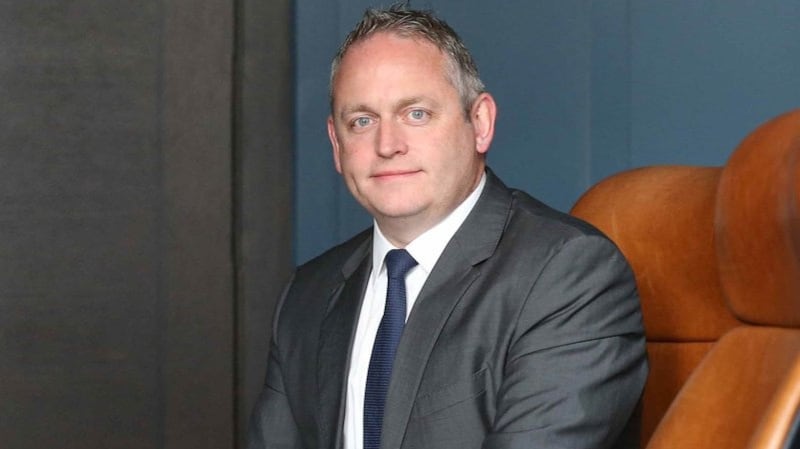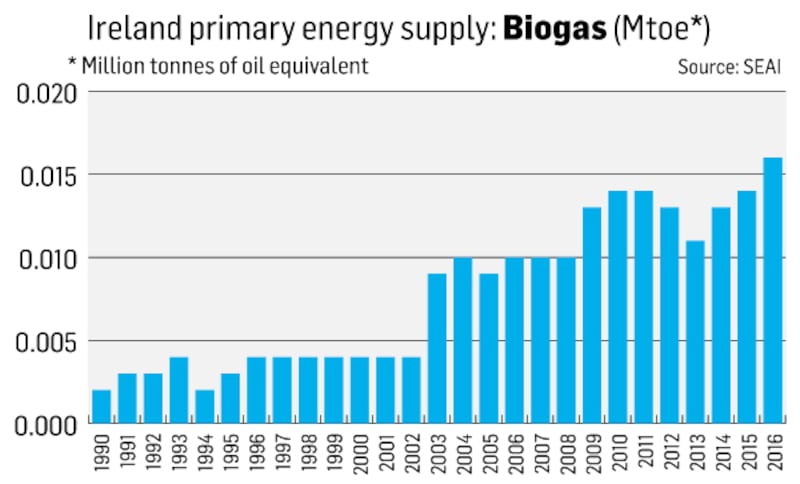Decarbonising Ireland is not for the faint-hearted. When it comes to home heating, the scale of the task is immense. Ireland has two million homes. A majority are fuelled by oil, and each are significant emitters of carbon.
In all, heating accounts for a third of all Irish emissions of carbon dioxide, which must rapidly fall. For now, the solution appears to be shaping up as a battle between technologies.
In one corner, the ESB is advocating electrification combined with heat pumps. In the other, the utility company Ervia – through its subsidiary Gas Networks Ireland (GNI) – backs green gas (biomethane) combined with existing infrastructure in the form of the national gas grid.
"Using renewable gas in the State-owned gas network can drastically reduce CO2 emissions generated by heating one million homes at a third of the cost of electric heat pumps currently incentivised by the Government," says Ervia chief executive Mike Quinn.
As Ireland moves to transform to a low-carbon economy and society by 2050, a KPMG report (commissioned by Ervia), has found "the installation of electric heat pumps in a million urban homes would also be more complex than using renewable gas for homes close to the State-owned gas network".
Using low-carbon biomethane within the existing gas network (a €2.5 billion investment in place) is the lowest way of decarbonising heat for one million homes connected to or in close proximity to the gas network, he adds. Moreover, it is the least disruptive way of decarbonising domestic heating.
“It’s not an either, or,” he explains as electrification/heat pumps will be needed for the remaining one million homes.
The KPMG evaluation considered costs and impact of three scenarios, namely using renewable gas within the existing gas network, deploying zero-carbon hydrogen with renewable gas within the existing network, and installing heat pumps supplied by electricity.
Prof Brian Ó Gallachóir of UCC says there is a very important role for renewable gas in heating buildings on or close to the gas network in helping us to meet our 2030 targets for climate action. “It would add to and complement well the measures identified in the National Development Plan.”
How green is gas?
The role of gas in the energy transition to come is subject to intense debate. Natural gas is seen by many as “a transition fuel”, facilitating the switch to carbon-free renewable energy source over coming decades. Some, however, dismiss its environmental credentials. It is the lowest source of carbon among fossil fuels but what has emerged over the past 18 months puts a different complexion on its importance, Quinn insists.

National Grid in the UK, which runs the country's national electricity and gas network, in a seminal position paper did not see any scenario where gas would not be used post 2050. "It will have a long-term role as a flexible, reliable and cost-effective energy source favoured by many consumers," and it predicted similar market conditions exist in Ireland.
While Ireland has done “an unbelievable job” on generating electricity from renewables such as wind, gas provides is the best resource to ensure a reliable base load of electricity available at any one time, Quinn says.
Ervia’s in-house business development group is looking at all options but biomethane; carbon capture and storage (CCS) and hydrogen (as a potential long-term replacement of natural gas) top its priority list – while it maintains “technology watch” on other potential future solutions.
Once proven and backed by regulatory approval, GNI brings the solution to market. Ireland has a reliable network capable of distributing vast quantities of gas. What it’s used for in the future may change, but it doesn’t require change to network, Quinn says.
Biomethane
GNI has a target of achieving a 20 per cent biomethane share of gas supply by 2030. “If we achieve a 4 per cent share by 2021, this can deliver a four-million tonne reduction of CO2 emissions in the period 2021-2030 – similar levels to that achieved by the combined goals of half a million people buying electric vehicles and an additional 170,000 homes installing heat pumps by 2030.

“The difference is, with the biomethane solution, there is less convincing and active decision-making required for homeowners,” Quinn says.
As well as assisting in decarbonising Ireland’s economy, developing an indigenous anaerobic digestion (AD) industry to generate biomethane could transform large parts of Ireland’s rural economy by stimulating high-value infrastructure investment locally, while creating significant construction and engineering roles within the wider economy – all the while securing energy supply in Ireland, Quinn adds. The technology is proven and Ireland has the ability to generate energy crops such as willows and grass, which will be part of the feedstock mix. The digestate produced in the process is recyclable on farmland, so therefore it would become part of the much-touted circular economy.
Carbon storage
Ervia is considering the development of a CCS facility using the Kinsale gas field, which will soon be exhausted. It has a capacity for 300 million cubic metres of CO2. It would initially involve capturing CO2 from three gas-fired power plants in the Cork area: Whitegate oil refinery; ESB Aghada Generating Station and a Bord Gáis facility in Cork Harbour.
It could be the first CCS facility in the EU, benefiting from “unique factors” that make it viable and cost competitive. “We are in discussions with the Government about extending the decommissioning period to allow us do a feasibility study,” adds Quinn, who visited the Kinsale field recently. The infrastructure (pipelines and platforms) is superb, he says. “There is nothing technologically that would stop this project from progressing.”
The existing pipe network, used to take the gas from the field for the past 30 years, can be deployed as it’s a low-pressure field,
With carbon pricing increasing, the CCS brings considerable lower-cost options, though it would need regulatory support (by way of subsidy). In return, it would play a major part in reducing Irish emissions.
Hydrogen
Ervia is monitoring the H21 Leeds City Gate project in the UK , which is evaluating the technological and economic feasibility of converting the city's existing gas network to 100 per cent hydrogen – Cork is being evaluated in a pilot project to assess the feasibility of taking a similar route there.











